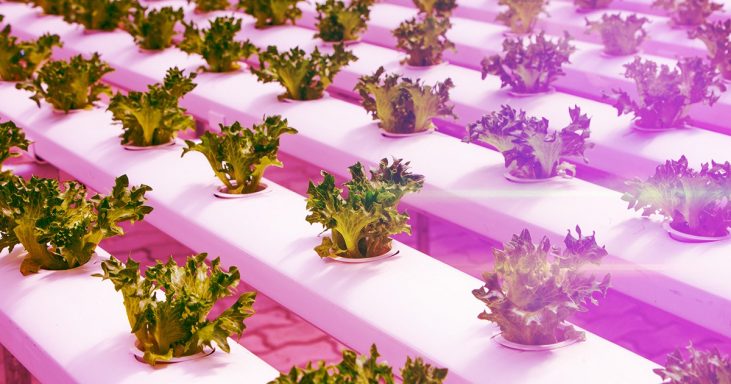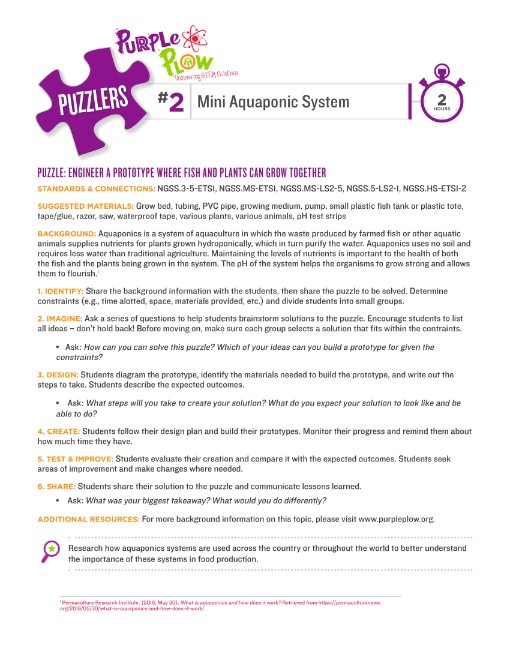

NGSS.3-5-ETS1, NGSS.MS-ETS1, NGSS.MS-LS2-5, NGSS.5-LS2-1, NGSS.HS-ETS1-2
Grow bed, tubing, PVC pipe, growing medium, pump, small plastic fish tank or plastic tote, tape/glue, razor, saw, waterproof tape, various plants, various animals, pH test strips
Aquaponics is a system of aquaculture in which the waste produced by farmed fish or other aquatic animals supplies nutrients for plants grown hydroponically, which in turn purifies the water. Aquaponics uses no soil and requires less water than traditional agriculture. Maintaining the levels of nutrients is important to the health of both the fish and the plants being grown in the system. The pH of the system helps the organisms to grow strong and allows them to flourish.
Share the background information with the students, then share the puzzle to be solved. Determine constraints (e.g., time alotted, space, materials provided, etc.) and divide students into small groups.
Ask a series of questions to help students brainstorm solutions to the puzzle. Encourage students to list all ideas – don’t hold back! Before moving on, make sure each group selects a solution that fits within the contraints.
Students diagram the prototype, identify the materials needed to build the prototype, and write out the steps to take. Students describe the expected outcomes.
Students follow their design plan and build their prototypes. Monitor their progress and remind them about how much time they have.
Students evaluate their creation and compare it with the expected outcomes. Students seek areas of improvement and make changes where needed.
Students share their solution to the puzzle and communicate lessons learned.
Research how aquaponics systems are used across the country or throughout the world to better understand the importance of these systems in food production.

Get This Puzzler Now!
Download PDF